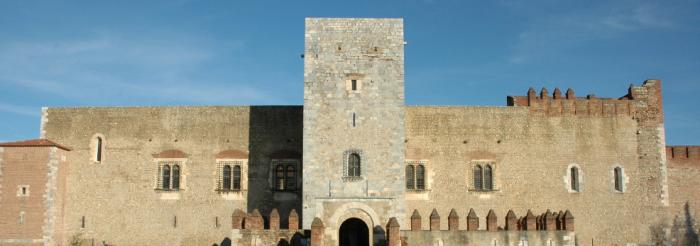
Palace of the Kings of Majorca Source: ©Renalias Josep - License Creative Commons - Public domain
It was the scene of invasions, battles during the war of the Spanish succession, Napoleonic wars and fights against Nazism.
Perpignan is a border town in the Pyrénées-Orientales département of France and a place of passage.
Situated on Via Domitia – ancestor of today's No. 9 motorway –, it was the scene of invasions, rivalry between France and Catalonia, battles during the war of Spanish succession and then the Napoleonic wars, and fights against Nazism.
Owned by the Kingdom of Majorca, James II, known as "the Conqueror", settled in Perpignan in 1276 and raised the town to the status of a capital. He had his palace built there, which is the oldest royal residence in France. His son, James III, was driven out by Peter IV of Aragon. The Palace of the Kings of Majorca then became a temporary residence for the kings of Aragon. Pope Benedict XIII stayed there in 1408.
The building is a fortified palace in the Gothic style, organised around three courtyards. The entrance is protected by a moat and a crenelated barbican. Its architects were Ramon Pau and Pons Descoll. As a result of the 16th-century wars between France and Spain, Perpignan changed from being a border town to being a citadel, the border stronghold: in 1540, Charles Quint added a remote line of fortification to the citadel; Philip II of Spain had the red brick ramparts built in 1587 in a hexagonal shape.
After becoming part of the Kingdom of France by the Treaty of the Pyrenees in 1659, Perpignan became a proper garrison town.
Vauban reinforced the defence system by adding fortified structures inside and outside the wall built by Philip II: six half-moons were added. He suggested building living quarters inside the citadel and, to solve the issue of expulsions caused by extending the place of arms, he suggested building a "new town" to the north, which he included in his plan of the exterior wall. The military architect incorporated it into a clever defence mechanism on the Catalonia border. He closed the lines of communication via the Collioure - Port-Vendres - Fort de Bellegarde fortifications.
To prevent an invasion via secondary cols (in the Tech and Cerdagne valleys), he designed Prats-de-Mollo, Fort des Bains, Mont-Louis and Villefranche-de-Conflent. The rear of the system was reinforced by Perpignan.
The Revolution and the Empire developed the military character of the city and even claimed a number of public monuments and religious rights-of-way for the troop.
Perpignan Tourist Office
Palais des Congrès - Place Armand Lanoux BP 215 66002 Perpignan Cedex
Tel: +33 (0)4.68.66.30.30
Fax: +33 (0)4.68.66.30.26
E-mail: contact-office@perpignan.fr
Palace of the Kings of Majorca
4 rue des Archers 66000 Perpignan
Tel.: +33 (0)4 68 34 48 29
Summer opening times: closes at 6pm. Winter opening times: 9am to 5pm
Closed on 01/01, 05/01, 01/11 and 25/12
Quiz: Forts and citadels